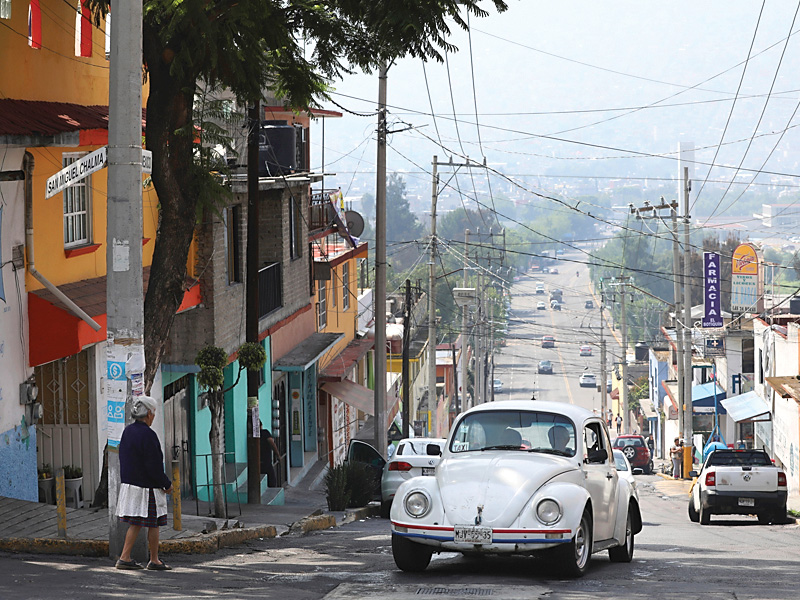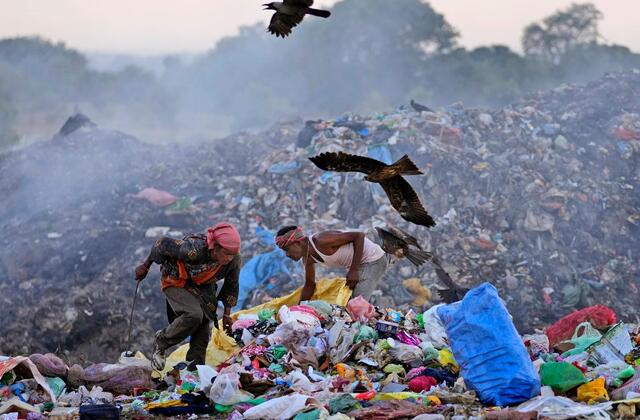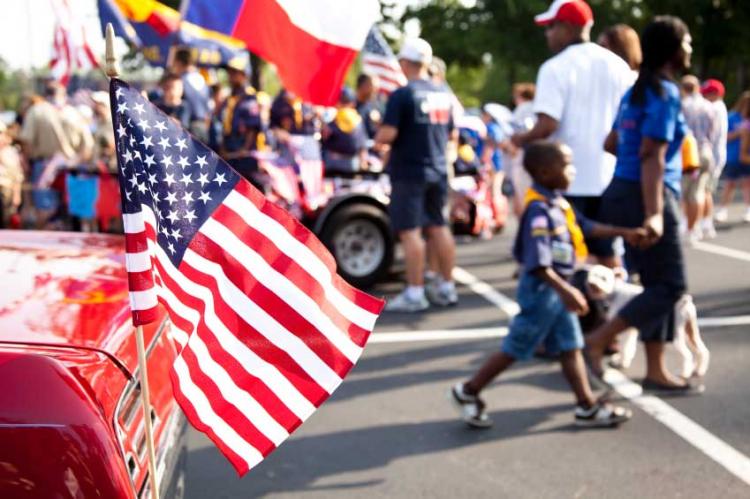뉴스&스피킹(영자신문)
하루 10분이면 영어에 대한 두려움을 극복하고 누구나 유창하게 영어를 구사하실 수 있습니다.
-
 Volkswagen Beetle Still Popular in a Mexico City Neighborhood German automaker Volkswagen (VW) ended production of its Beetle model in 2019. But some communities around the world are still demonstrating a lasting love for this famous vehicle.
Volkswagen Beetle Still Popular in a Mexico City Neighborhood German automaker Volkswagen (VW) ended production of its Beetle model in 2019. But some communities around the world are still demonstrating a lasting love for this famous vehicle.
One such area is Cuautepec, a neighborhood outside of Mexico City. There are so many VW Beetles in the area that some local people even nicknamed the neighborhood “Vocholandia.” In Mexico, the VW Beetle has long been known as the “vocho.” So, the term Vocholandia means “Beetle land.”
The vehicle has a long history in the Mexican capital. At one time, VW Beetles were commonly used as taxis throughout the city. But today, the northern neighborhood of Cuautepec is the place to go to see the most Beetles, which are also called “Bugs” in English.
Janette Navarro is the owner of a 1996 Beetle. Navarro lives in the neighborhood. She told the Associated Press (AP) one reason the cars are so popular is because the community is hilly, and the Beetle’s back-positioned engine provides added power.
“No other car gets up here,” Navarro said. “Just the vocho.” She drives her VW as a taxi. Navarro added that she started the job eight years ago to support her three children. The job helped her put them through school.
“When they ask me what I do for work, I say proudly that I’m a vochera (a vocho driver),” Navarro said. “This work keeps me afloat…It’s my adoration, my love.”
The first Beetle was introduced in Germany in 1938 when the Nazi party controlled the country. The first vehicle was developed by Austrian-born automotive engineer Ferdinand Porsche. The Beetle grew to become very popular in the United States and in other countries. It was long known as “the people’s car.”
Beetles were manufactured in Mexico, but production on older models ended in 2003. A newer model was produced after that, but VW stopped all manufacturing of the vehicles in 2019.
While some older cars in the community show their age, others still appear to be in good shape.
One driver named his bright blue Beetle “Gualupita” after his wife, Guadalupe, and added personal designs. Another Beetle seen rolling down the street was painted pink and white, with the front headlights made to look like cat eyes.
People who repair the vehicles told the AP it seems like the number of vochos is dropping off in Mexico City. Repairman David Enojosa said his family’s shop used to specialize mainly in Beetle parts. But since VW halted production five years ago, they are no longer as easy to get.
Enojosa predicted that if shortages continue, the area’s Beetles could “disappear in two or three years.” He added, “Before we had too many parts for vochos, now there aren’t enough.”
One of Enojosa’s customers told the AP he plans to keep looking for parts to keep his Beetle running as long as possible. The customer, Jesús Becerra, says he would love to keep seeing many cars in the neighborhood for many years.
“You adapt them, you find a way to make it keep running,” he told the AP.
Joaquín Peréz is the 18-year-old owner of a white, 1991 VW Beetle. He said he is carrying on a family tradition by continuing to drive the car as a taxi. His father was a taxi driver who also drove a Beetle.
Peréz noted that his father taught him everything he knows about the job and the vehicles. “This area, always, always since I can remember has been a place of vochos,” Peréz said. He added, “This here is the car of the people.”
I’m Bryan Lynn.View -
 India’s Garbage-picking Jobs Made Worse by Extreme Heat Near Jammu, India, the smell of burning garbage, or waste material, spreads out for kilometers across the city. The site where the garbage is burned holds a mix of plastic, industrial, and medical waste. Experts say the air is dangerous to breathe.
India’s Garbage-picking Jobs Made Worse by Extreme Heat Near Jammu, India, the smell of burning garbage, or waste material, spreads out for kilometers across the city. The site where the garbage is burned holds a mix of plastic, industrial, and medical waste. Experts say the air is dangerous to breathe.
The extremely high summer temperatures add to the danger.
But a small number of people work at the site through the smoke and intense heat. They search the garbage before it goes into the fire. They collect anything that might be sellable.
They earn at most four dollars a day.
“If we don’t do this, we don’t get any food to eat,” said 65-year-old Usmaan Shekh. “We try to take a break for a few minutes when it gets too hot, but mostly we just continue till we can’t.”
Shekh and his family are among as many as four million garbage pickers around India. The job is dangerous, and increasing summer heat brings even greater risk to the workers. In Jammu, a northern city, temperatures this summer have climbed above 43 degrees Celsius often.
As waste breaks down, it creates heat. Summer temperatures intensify this heating. As a result, the landfill releases more gases such as methane and carbon dioxide. These gases are dangerous to breathe. Experts say the summer landfill fires can burn for days.
India’s federal government estimates the country produces about 56 million metric tons of waste each year.
A 2016 law requires dangerous material to be separated from landfills. But enforcement of the law has been weak. This adds to the risk the landfill workers face.
Bharati Chaturvedi is founder of the New Delhi-based Chintan Environmental Research and Action Group. She has worked with waste pickers for more than 20 years. She noted that the workers already face health risks from direct contact with the waste. The extreme heat is an additional danger.
“It’s been a terrible, terrible, terrible year,” she said. “They already expect to suffer from the heat and that gives them a lot of anxiety, because they don’t know if they’ll make it, if they’ll survive it.”
Heatstroke, cardiovascular diseases and chronic kidney diseases are some of the risks from working outdoors during high heat.
Ruksana Begum is a 41-year-old waste picker at the Bhalswa landfill in the city of New Delhi. She said some waste pickers are working less because of the heat. As a result, they only have enough money for one meal a day.
“They are trying to avoid work because of the heat since if they go to work, they end up spending more at the hospital than for their food,” Begum said.
Chaturvedi said it is necessary to give the workers water, shade, or a cooled building to use near the landfill. She said they should be urged to work less when the temperatures are high. And she said medical care must be available to the workers when they need it.
Geeta Devi is a 55-year-old garbage picker. She also works at the Bhalswa landfill in New Delhi. Devi says when the heat makes her dizzy, she takes shelter. Sometimes, someone gives her water or food. But she has no choice about working at the garbage site. She earns about two dollars a day. That’s what she needs to feed her children.
“It is difficult to do my job because of the heat. But I have no other job,” she said.
I’m Andrew Smith.View -
 Independence Day in the US The United States celebrates its Independence Day on July 4.
Independence Day in the US The United States celebrates its Independence Day on July 4.
John Adams, who later became America’s second president, wrote to his wife in 1776 that the day would be remembered with fireworks and celebrations “from one End of this Continent to the other.”
But the day he was talking about was July 2, 1776, not July 4. July 2 is the day the Continental Congress of the original 13 colonies voted for independence from Britain. Congress did not officially sign the Declaration of Independence, mainly written by Thomas Jefferson, until two days later.
First July 4 celebration
Pauline Maier was a historian who wrote the 1997 book American Scripture: Making the Declaration of Independence. She wrote that in early July of 1777, members of the Continental Congress nearly forgot that it had been a year since they declared their freedom from the British.
They remembered on July 3. It was too late to celebrate on July 2. So, they decided to mark the country’s independence with a celebration the following day: July 4.
The Pennsylvania Evening Post of Philadelphia reported, “Yesterday the 4th of July, being the anniversary of the Independence of the United States of America, was celebrated in this city with demonstrations of joy and festivity.”
At night, the Post said, “There was a grand exhibition of fireworks…and the city was beautifully illuminated.”
Becoming official holiday
The tradition of celebrating Independence Day started to expand after the War of 1812 against Britain. Such celebrations were mostly held on July 4.
John Adams, however, still believed that Americans should celebrate their independence on July 2. Historians say Adams reportedly turned down invitations to take part in July 4 events until the day he died. Adams died on July 4, 1826.
That same day, Thomas Jefferson also died. The two men and former presidents were friends as well as rivals. They both died on the 50th anniversary of the signing of the Declaration of Independence.
In 1870, the U.S. Congress made July 4th an official holiday.
Modern-day celebrations
In July 1776, the U.S. was a country of 2.5 million people. It is now a country of 336 million, the U.S. Census reports. These days, Americans celebrate Independence Day with fireworks and other festivities.
In Philadelphia, Pennsylvania, organizers are holding a 16-day festival of fireworks, music, and food to celebrate “America’s birthday in America’s birthplace!”
But the biggest Fourth of July fireworks show is in New York City. It can be seen in the neighboring states of New Jersey and Connecticut. It is also broadcast nationwide on television.
The small village of Lewes, Delaware celebrates the holiday and its coastal history with the Independence Day Boat Parade.
In Los Angeles, California, movie lovers can choose to celebrate the holiday by watching old Hollywood films from the grassy area of the historic Hollywood Forever cemetery.
And far north in Anchorage, Alaska, Independence Day traditions include food, games and late-night fireworks. With 19 hours of daylight this time of year, the fireworks show does not start until midnight.
I'm Jill Robbins.View -
US Cities Build Small Communities for the Homeless Some U.S. cities are building housing, called “micro communities,” that is meant to combat increasing homelessness. The housing units in these communities are small and built quickly.
Unlike group shelters, micro communities give each homeless person his or her own living space. Officials say they believe the communities, when combined with other services, can put their residents on a path to permanent housing more effectively than other projects for the homeless.
A micro community
The Melody is a micro community built on a former parking lot in the city of Atlanta, Georgia. Officials built 40 small studio apartments from shipping containers. Each studio has many things needed for the home. These include a single bed, a heating and cooling system, a microwave oven, a TV, a desk, a sink and a bathroom. The area also has plants, green plastic ground covering, and a place to walk dogs.
Cynthia Diamond is a 61-year-old former cook who uses a wheelchair. She has been homeless for many years. Now she lives at The Melody. She told reporters that she is very thankful to live in the community and enjoys having her own living space. “I have my own door key…I’m going to stay here as long as the Lord allows me to stay here,” she said.
The city of Denver, Colorado, has built three micro communities. It has also turned hotels into housing for the homeless. In Los Angeles, a 232-unit community has two buildings, each with three levels that are made from shipping containers.
The latest information says over 1,500 people in Denver have joined its housing program. Over 80 percent of those who joined are still in the housing.
Both Atlanta’s and Denver’s programs act as steps to help people find jobs and permanent housing. Denver aims to move people from the micro communities into permanent housing within six months.
That includes Eric Martinez, aged 28, who has been homeless for much of his life. He said homelessness “…makes me feel less of a person. I had to get out of it.”
The services in the micro communities are mostly centralized. They offer treatment for mental health, drug and alcohol abuse. They also provide advice, job training and other forms of help. Martinez said the community has been “very uplifting and supporting.”
Peter Cumiskey works at The Melody in Atlanta. He said the micro community is able to serve every level of a person’s needs, “from security and shelter, all the way up to self-actualization and the sense of community.”
Program costs and development
The city of Denver built a total of 160 small structures. Denver’s mayor Mike Johnston told the Associated Press (AP) that it took about six months to complete them. Each unit costs $25,000, he said. One thousand converted hotel units cost about $100,000 each.
The Melody project in Atlanta took four months to build. Each unit costs about $125,000. Support workers and security operations cost about $900,000 a year.
Andre Dickens is Atlanta’s mayor. He wants to supply 500 units of quickly built housing on city-owned land by December 2025.
Few people in Atlanta expressed worry when The Melody was announced last year. However, as city officials look to expand rapid-housing areas, they know people might not support the idea.
In Denver, Johnston said he attended at least 60 meetings with residents in six months as the city tried to find places for the new communities. Local residents expressed worry about issues such as waste and safety.
“What they are worried about is their current experience of unsheltered homelessness,” Johnston said. He said city officials needed to show residents that micro communities could be successful. With the existing projects, he now says he has some proof to reduce residents’ concerns.
As for Martinez, he keeps all his belongings ready in case he has to move although he says he feels secure in his small home with his cat, Appa.
He is now preparing for the next steps in his path towards permanent housing. He has a date for a meeting about a new job. The next step for him is to receive a document showing he qualifies for financial support from the city to rent an apartment.
“I’m always looking down on myself for some reason,” he said. But “I feel like I’ve been doing a pretty good job. Everyone is pretty proud of me,” he added.
I’m Andrew Smith. And I'm Anna Matteo.View -
 Learn Some 'Wave' Expressions And now, Words and Their Stories, from VOA Learning English.
Learn Some 'Wave' Expressions And now, Words and Their Stories, from VOA Learning English.
Today we talk about something found in water – waves.
Surfers are experts at riding waves in the ocean. But even if you have never been in the ocean or tried the sport of surfing, you can still ride the waves.
If you ride the wave of something you gain from a widespread popularity or approval of something. The online dictionary Merriam-Webster defines it this way: “to experience a time when many people share a strong feeling or attitude about something at the same time.”
For example, let’s say a woman runs for office but she doesn’t have any political experience. She does, however, belong to a famous and popular political family. After she wins, many people say she rode the wave of her family’s fame.
But this expression doesn’t always mean taking advantage of something in a bad way. For example, a sports team may want to ride the wave of their recent wins to keep on winning.
Catching the wave is a similar expression. If you catch the wave, you also take advantage of an opportunity. You are at the right place at the right time.
Now, sometimes we aren’t riding or catching waves, but making waves instead. When we make waves we do something that makes people notice us. Often they notice us in a bad way. And the waves we make cause problems -- similar to waves in water making trouble for boats and swimmers.
Here’s an example. If you start a new job, it is usually not a good idea to make waves. When you make waves you create trouble and interfere with usual business operations. We can also say to rock the boat. This also means to cause problems.
We use the word “wave” in several phrasal verbs.
Let’s start by combining it with “on” and “off.”
Waving someone on is the same thing as giving them a sign to keep moving. For example, when police officers direct traffic they wave people on. The police are guiding drivers or walkers across roads. Waving someone on can also mean to encourage someone. If your friend is running in a race, you can wave them on to the finish line.
However, if you wave something or someone off, you cancel, dismiss, or refuse them. For example, when I offered help to the man who had fallen off his bike he just waved me off. He either didn’t need or want my help or maybe was too embarrassed to accept it.
You can also combine “wave” with “down.” To wave down someone or something is also a signal to stop. For example, you can wave down a friend or wave down a taxicab.
And if you wave something or someone aside you are either directing them or dismissing them. It depends on the situation.
Now, let’s hear some of these “wave” terms used in a short example.
Once I invited a friend to a concert. The musical group was very popular. They were riding the wave of a similar but earlier rock and roll band. Many people would come to their concerts just to gather in the parking lot and listen to the music from a distance. And that is what happened during this concert.
But this venue was different than most. It was outside and did not have a barrier around it. So, people without tickets started sneaking in. Someone would find a place where they could sneak in and wave on others to do the same. As a result the venue got so crowded that the security guards had to wave ticket-holders aside to a different entrance. And if you didn’t have a ticket and hadn’t snuck in, they just waved you off.
As my friend and I waited in line to enter, I warned her that the concert would be very crowded. But she waved my concerns aside. She didn’t care. We went in anyway. But after the concert was over, I immediately waved down a taxi to go home. I had had enough of the large crowd.
And that’s all the time we have for this Words and Their Stories. Until next time ... I’m Anna Matteo.View

